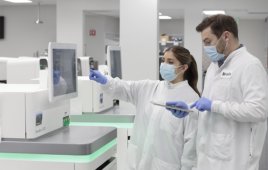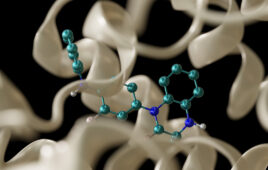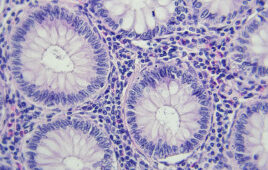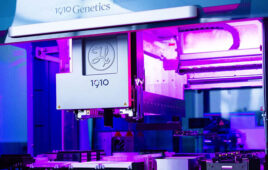Shimadzu’s MCE-202 MultiNA with reusable microchips automates sample processing for DNA and RNA nucleic acid, including pre-treatment, separation, detection, and data preparation, in a single device. An LED-excited fluorescence detector increases sensitivity to more than 10 times that of ethidium bromide staining, yet operating costs for this unit are comparable to or less than agarose gel electrophoresis and 25 percent less than equivalent-class microchip systems, according to the company.
The MultiNA system can register up to 120 analysis cycles, and perform efficient analysis from just one sample. By parallel processing up to four microchips, it can produce pretreatment and electrophoresis results in just 75 seconds.
The MultiNA is automatic with high-speed analysis, simple operability, high separation, and high repeatability. It uses reagent kits that correspond to separation size, automatically injecting a set quantity of reagent so it uses small amounts of important samples (as little as 2 ?L) and high-cost reagents. Simultaneous electrophoresis of an internal marker ensures analysis reliability and reproducibility.
Shimadzu’s software for the MultiNA uses size markers to automatically correct electrophoresis results for size prediction and quantitation. Users can perform either automatic or manual data analysis, and confirm completed results even as other sample analysis continues. The software includes a well status display, analysis schedule list and chip status display for current operating status.
See Shimaduz’s MCE-202 MultiNA at Pittcon, Booth 3755.
Filed Under: Genomics/Proteomics




